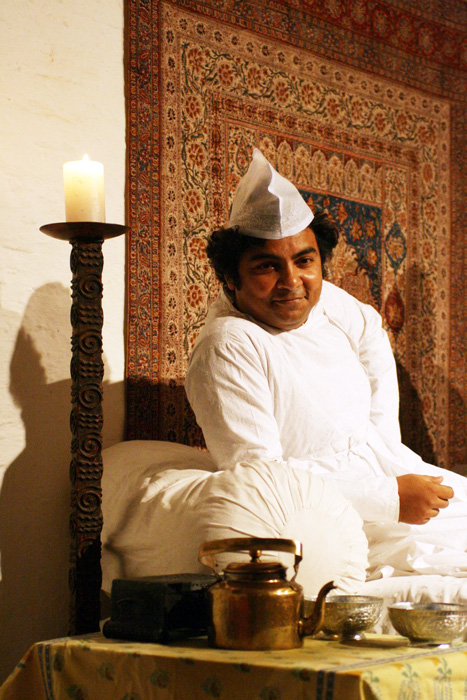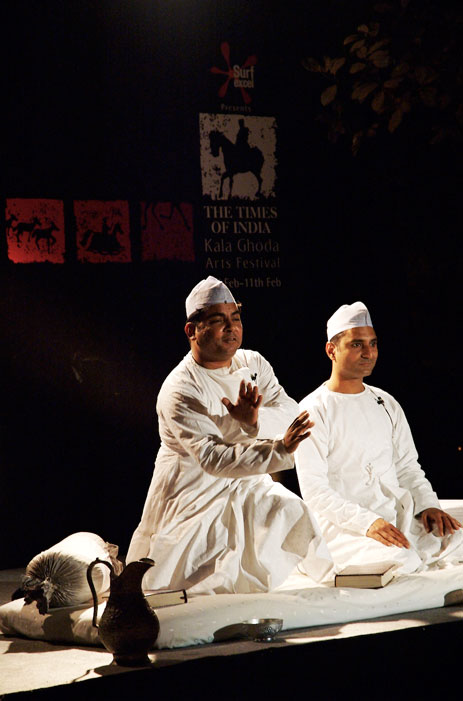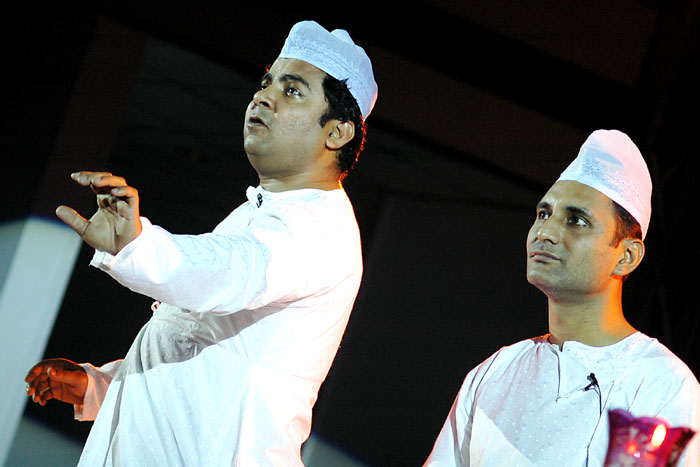Mahmood Farooqui



Grant Period: Over two years
Writer, scholar and performer, Mahmood Farooqui, has been engaged with Dastangoi, the traditional sixteenth century performed art of storytelling in Urdu since 2004. His work has essentially involved writing and doing performances on the longest fictional narrative of modern India, the Dastan-e-Amir Hamza. The Extending Arts Practice programmes supported him to further research and explore Dastangoi, towards composing new and experimental dastans (stories), training more dastangos, and performing in the older parts of north India where this art form originated.
Recognising that research on dastans and Dastangoi has so far concentrated only on its literary qualities and modes of production, Mahmood emphasised that his interest lies primarily in situating it in the wider context of performance. He was keen to examine its relations with other performance practices that include exploring the dialogue between Dastangoi and the Parsi theatre, for example. Mahmood’s overarching plan during the grant period was to delve more fully and deeply into the form and to play a more active role in extending this practice by training more dastangos, creating new dastans and performing to newer audiences.
To induct new tellers, he planned to conduct a series of workshops with aspiring performers and give them basic training and Hindi transliteration of the texts to begin their practice. Also, since the essence of the art of Dastangoi lies in improvised storytelling, the aspiring dastangos could start with the bare essentials and weave in the colour depending on the predilection of the audience. From these workshops he planned to select six performers who would further collaborate with him to create and adapt performances from the traditional texts. At the end of this exploratory process, Mahmood planned to hold a small Dastangoi festival where the new dastangos could share their performance style with an audience.
Other than creating new dastangos and new dastans, Mahmood also stressed the need to create newer audiences for Dastangoi. Given its pot-boiler nature, he saw dastangoi as a precursor of mainstream cinema in many ways. Mahmood was therefore confident that the form still had the ability to attract both non-theatre goers and others who have been weaned purely on cinema or television. He planned to connect with the mushaira networks that still remained a huge draw for Urdu familiar audiences in most parts of the country. Through these networks he would organise dastangoi performances in smaller cities like Patna, Lucknow, Jaunpur, Faizabad and Bhopal. As these cities still have a strong tradition of literary production in Urdu, Mahmood was keen to see how the audiences of today react to the dastans.
